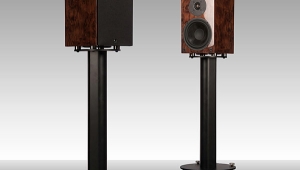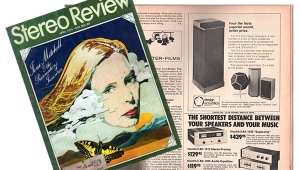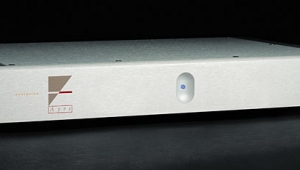| Columns Retired Columns & Blogs |
The Fifth Element #46 Size Matters
Sidebar: Size Matters
Table 1: Loudspeaker Driver Diameters vs Frontal Areas
| Driver Diameter in inches | Frontal Area, in square inches | Relative Area Increase Over Next Smaller | Area Increase Over 4" Driver |
| 4 | 12.5 | - | - |
| 5.5 | 24 | 92% | 92% |
| 6.5 | 33 | 37% | 264% |
| 7 | 38.5 | 17% | 308% |
| 8 | 50 | 30% | 400% |
| 9 | 63.5 | 27% | 508% |
| 10 | 78.5 | 24% | 628% |
| 11 | 95 | 21% | 760% |
| 12 | 113 | 19% | 904% |
| 15 | 177 | 56% | 1416% |
An 8" driver has four times the frontal area of a 4" driver. A 6.5" driver has 2.6 times the frontal area of a 4" driver, while a 7" driver has three times the frontal area of a 4" driver.
Given the logarithmic nature of musical frequencies, however, a driver with four times the frontal area will not give you four times as much bass extension. Cabinet size and loading will of course be significant factors, but all things being equal, I wouldn't expect the bass-extension increase when going from a 4" driver to an 8" driver to be much more than half an octave.
But that ain't chopped liver, either. We too often think in terms of frequency numbers (Hz) rather than in terms of octaves. If a speaker with a 4" driver begins rolling off at D = 74Hz, going down a full octave gets us to D = 37Hz, while half an octave gets us to A = 55Hz.
In my subjective estimation, going from a speaker that begins rolling off at 74Hz to one that begins rolling off at 55Hz (and has usable output at 40Hz) is going from a speaker that will be frustrating to listen to on account of its lack of bass, to a speaker that has enough bass for many purposes, almost enough bass for most purposes, but admittedly not enough bass for some purposes. How's that?
In my view, the real tipping point comes at E = 41Hz, which is the upper reach of the bottom octave (20–40Hz). If a speaker is nearly flat at 41Hz, which is the frequency of the lowest string on an electric bass guitar, and has well-controlled, non-lumpy bass rolling off below that, that speaker is likely to be sufficient for most purposes, coming up short only for pipe-organ pedals and large symphonic works.
Note: To qualify for consideration as a "Class A Full-Range" loudspeaker in Stereophile's "Recommended Components," a speaker must offer bass extension to 20Hz. To qualify for "Class A, Limited Low-Frequency Extension," a speaker must still reach down to 40Hz.—John Marks
- Log in or register to post comments




































